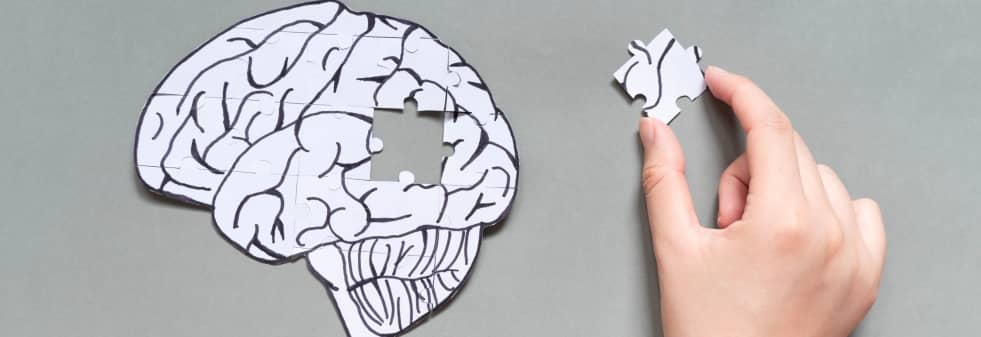EMDR Therapy
What is EMDR
EMDR is a mind and body trauma therapy that allows you to go beyond just talking about what happened and into truly healing it. It allows you to access the root of trauma and unhealthy patterns so that you can rewire those neural pathways for change and healing.
In your session, a therapist will guide you through identifying the limiting beliefs and feelings associated with the experience you want to heal. Bilateral stimulation via eye movements, tactile tapping or audio sounds will be used to help desensitize and decrease the negative experience.
Our approach to EMDR is rooted in our overall belief that the mind and body have an innate capacity for healing and resilience. There are important factors that need to be present in order to activate this innate healing capacity. These include feeling safe in your mind and body, the compassionate and mindful presence of a therapist, and a process such as EMDR that allows you to access the deeper parts of your mind and body.

EMDR Therapy Online
EMDR is highly effective whether offered in-person or online. Each therapy session is safe and confidential through our private video program link that we send you. Our therapists will have a consultation with you to get to know you. After the initial consultation, we assess and determine the best course of EMDR therapy. EMDR sessions are typically 80 minutes to provide adequate time for processing in a safe and calm environment.
What to expect during an EMDR therapy session
After learning about the areas that you would like to work on, we will explore ways for you to feel grounded and safe in your mind and body. You will have tools and practices to work with to help experience this during and between sessions. In a nutshell here is an overview of an EMDR session.
During an EMDR session we will help you identify the issue or area you would like to focus on healing. From here we will identify a negative or limiting belief regarding this issue that impacts you today, what you would rather believe, what you feel and where you feel it in your body. Bilateral stimulation will be used to help desensitize and decrease the negative experience. Once this is complete the positive belief will be worked with and we will recheck how you are feeling in your body until you are experiencing a sense of neutral or calm.

Preparing for your EMDR Therapy Session
To prepare for EMDR therapy it can be helpful to explore the areas of your life you want to work on and heal. From here, look at specific incidents that led to any of the issues, limiting patterns or emotional pain you are experiencing. If you don’t have specific or detailed memories that is okay we can help you identify what is important to experience and how EMDR can help best.
How EMDR works
Eye Movement Desensitization Reprocessing (EMDR) accesses deep centers of the brain and allows for the reprocessing, releasing and healing of negative experiences. The strategy itself follows a specific series of eight phases.

EMDR 8 Phases
Eye Movement Desensitization Reprocessing (EMDR) accesses deep centers of the brain and allows for the reprocessing, releasing and healing of negative experiences. The strategy itself follows a specific series of eight phases.
History and treatment plan
Preparation and resource skill development
Assess and identify the distressing issue, negative beliefs and body sensations.
Desensitization through bilateral stimulation
Installation of a reparative positive belief
Body scan
Closure
Reevaluation
As part of this process, the client focuses on a stressful or traumatic issue while experiencing bilateral stimulation. Eye movements were originally the main form of bilateral movement however tactile and auditory bilateral stimulation have been found to be equally effective. The client is guided to repeatedly reexperience the issue while being guided through the steps in the process. It has been likened to a form of exposure therapy given the repeated visualizing and felt sense reexperiencing of the traumatic incidents. These steps allow the therapist and the client to track the productivity throughout the session.
Why EMDR works
EMDR addresses trauma, unhealthy habits and distressing experiences at their root. To understand the root of trauma we need to explore what happens when we experience trauma and how trauma memories are stored.

What happens when we experience trauma
We experience trauma when the stress or fear of threat overwhelm our system and we are not able to consciously process everything that is happening. Our instincts take over and our nervous system goes into survival mode to help us deal with the situation. This is a process known as neuroception, where we assess risks and react via our primal instincts. This looks like the part of our nervous system that is capable of survival and takes a primary role and we either fight, flight, freeze, appease or collapse in response to what is happening. Our rational thinking brain takes a back seat to let our instinctual emotional brain take over. Once we experience an event as traumatic, our nervous system makes it difficult to get out. The part of our brain responsible for memory of details, time, space and basic facts becomes far less active and our sensory memory takes over. We can lose track of the details making it challenging to recall what happened after the fact. The traumatic experiences get stored at a sensory, visceral, and often nonverbal level in our implicit memory. We may experience this at more of an unconscious level making it difficult to fully process at a more cognitive or conscious level.
These memories tend to get suspended or stuck in time leaving a residue of unresolved distressing energy. This puts a lot of stress on the mind-body system, is exhausting and inevitably is not sustainable. Healing as a result requires accessing the implicit memories that exist outside of our ability to verbalize and rationally process our thoughts about what happened. EMDR and other mind body therapies known to access implicit memory networks are vital to healing. They help move memories from an unconscious and unresolved state to a more conscious and adaptive state.

The negative impact from trauma can lead to multiple mental and physical health conditions.
Anxiety
Depression
Insomnia
PTSD
Phobias
Panic Attacks
Isolation
Autoimmune Disorders
- Digestive Disorders
Trauma lives in our response not the event
The essence of trauma lives in our response to an event vs. the actual event itself. This is why two different people can experience the same car accident, childhood dysfunction or other highly stressful event and one may feel traumatized while the other does not. A series of important factors may play a part in these different responses such as perception of the event itself, perception of available support, attachment history and general constitution.
Signs that we are likely experiencing the effects of trauma
Disconnected
Powerless
Overwhelmed
Anxious
Vigilant
Numb
Shock
Edgy
Disoriented
Distrusting
Developmental Trauma
In addition to specific significant traumatic events, trauma also looks like a series of smaller chronic events, habits, and associations that cause overwhelming stress during childhood. This is what is known as developmental trauma. A primary component of developmental trauma includes the absence or ineffectiveness of a caregiver to help reduce the stress. This results in a disruption in basic attachment necessary for feeling a sense of safety and security that is critical to healthy brain and body development in childhood.
Top Down vs Bottom Up Approach
Many traditional therapies work from a top-down model where thoughts are used to change feelings, behaviors, and experiences. This model relies on the upper part of the brain (neocortex) which is also the newest part in our evolution, to manage and alter the inner and more primitive parts of the brain. As a result, the success of a top-down approach is contingent upon an individual’s ability to analyze, narrate, and verbally process their thoughts and feelings.
The way trauma is experienced and stored is also a reason that talk therapy approaches are not as effective in treating it. Trauma lives in the response not the event, in the sensory experience not the details and analysis of events. Mind body approaches such as EMDR and Brainspotting follow the bottom-up model where the inner brain sends information and experiences up through the limbic system for release and into the neocortex for processing. This is why mind body therapies such as EMDR that access the deeper centers of the brain and body are essential for treating trauma.

EMDR and REM Sleep
Neuroscientists propose that the bilateral stimulation during EMDR has a therapeutic effect similar to REM sleep. During REM sleep brain mapping shows that the emotional centers of the brain are more active and it is proposed that during this time we are processing through stress and negative experiences. The alternating stimulation of the right and left brain hemispheres during EMDR while focusing on a stressful issue is thought to intentionally process, release and repair similar to REM sleep. EMDR is guided by the adaptive information processing model which proposes that traumatic experiences get stored or stuck in the brain, body and nervous system causing mental, emotional and physical imbalances and even pathology. Through the process of bilateral stimulation these incomplete trauma memories are processed in a productive and healing manner. Adaptive resolution may look like healing emotional distress, decrease in symptoms of PTSD, transformation of negative beliefs and regulation of nervous system activation and arousal.
About the Authors

Hilary Stokes Phd
Dr. Hilary Stokes is a licensed psychotherapist in private practice in San Diego, California. Dr. Hilary received her PhD in psychology with a specialty in transpersonal psychology from San Diego University for Integrative Studies, a master’s degree in social work from San Diego State University and a master’s degree in Sport Psychology from San Jose State University.
- Item
In addition to her private practice, she has experience working in integrative medical facilities such as the world-renowned healthcare facility Sanoviv Medical Institute, treatment centers for addictions and PTSD including Casa Palmera Treatment Center, psychiatric hospitals, schools and universities, correctional facilities, and business organizations.
Dr. Hilary specializes in a mind-body approach to healing trauma, anxiety, depression, grief, coping skills, self-esteem, addictions, eating disorders, relationship challenges, life transitions, purpose in life, and performance anxiety.
She has published several articles and co-authored two books, The Happy Map: Your roadmap to the habit of happiness and Manifesting Mindset: The 6-step formula for attracting your goals and dreams. She is currently furthering her knowledge and expertise in attachment focused EMDR and somatic therapy. In addition to a love of learning about neuroscience and mind body healing, Hilary can be found meditating, hiking, surfing, scuba diving, and spending time with her pets, family, and friends.
Companies and organizations we have worked with:
Presentations, Doris Howell Foundation, Institute of Functional Medicine, La Jolla Institute for Immunology, Nissan, Compass Real Estate Sharp Health Institute, Mattel, Usana Health Sciences, Youth and Family Assistance, MLK Family, Decorus, Odessy, Ariix, Casa Palmera Treatment Center, EVCI, Interboro, DEMA, GSDBA, LGBTQ Center San Diego
Websites and social featuring our publications:
- Mind Body Green
- Psych Central
- Cure Joy
- SD voyager

Kim Ward Phd
Dr. Kim Ward received her PhD in psychology with a specialty in transpersonal psychology from San Diego University for Integrative Studies. She also holds a master’s degree in transpersonal psychology from John F. Kennedy University in Orinda, California. Dr. Kim is a certified trauma-informed coach and life coach in private practice in San Diego, California.
- Item
In addition to her private practice, she has experience working in integrative medical facilities such as the world-renowned healthcare facility Sanoviv Medical Institute, treatment centers for addictions and PTSD including Casa Palmera Treatment Center, psychiatric hospitals, schools and universities, correctional facilities, and business organizations. Dr. Kim specializes in an integrative approach to dealing with trauma, anxiety, and depression, making peace with the past, transforming stress, healing relationships, living with purpose, and rewiring your brain for happiness.
She has been featured in several articles and co-authored two books, The Happy Map: Your roadmap to the habit of happiness and Manifesting Mindset: The 6-step formula for attracting your goals and dreams. Given the powerful healing experiences she witnesses with Brainspotting, she is presently advancing and deepening her skills in both Brainspotting and somatic therapy. Outside of her love for helping people, Kim has a passion for exercise, all animals, spending time in nature, meditating, and connecting with her family and friends.
Companies and organizations we have worked with:
Presentations, Doris Howell Foundation, Institute of Functional Medicine, La Jolla Institute for Immunology, Nissan, Compass Real Estate Sharp Health Institute, Mattel, Usana Health Sciences, Youth and Family Assistance, MLK Family, Decorus, Odessy, Ariix, Casa Palmera Treatment Center, EVCI, Interboro, DEMA, GSDBA, LGBTQ Center San Diego
Websites and social featuring our publications:
- Mind Body Green
- Psych Central
- Cure Joy
- SD voyager
Our office is located in Carlsbad, CA 92009 We also do nationwide sessions via Zoom and FaceTime.
